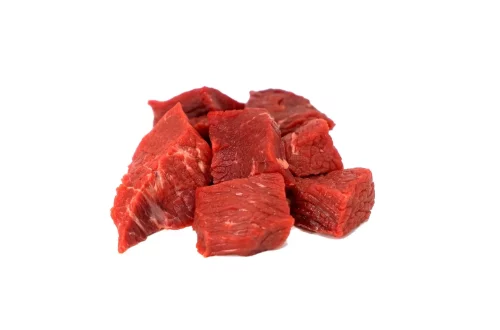-
How Many Ounces Are in 9 Pounds? A Simple Conversion Guide
Understanding weight conversions is crucial in various aspects of everyday life, whether you’re cooking, baking, or even managing your fitness routine. Many people find themselves in situations where they need to convert units of measurement, especially when dealing with different weight systems. The imperial system, primarily used in the United States, employs pounds and ounces, while many other countries use the metric system, relying on grams and kilograms. Pounds and ounces are both units of weight, but they are not interchangeable without a conversion factor. This can lead to confusion for those who are more accustomed to one system over the other. For instance, if you’ve ever found yourself perplexed…
-
How Many Ounces Are in 9 Pounds? A Quick Conversion Guide
Understanding weight conversions is essential for various everyday tasks, from cooking to shipping packages. When dealing with different units of measurement, it’s crucial to know how to convert them accurately to avoid confusion and ensure precision. In the United States, the imperial system is commonly used, which includes pounds and ounces as standard weight measurements. Many people often find themselves needing to convert pounds to ounces, especially when they’re following a recipe or determining the weight of an item. The conversion process, while relatively straightforward, can lead to misunderstandings if not done correctly. With various scenarios requiring this knowledge—from baking to fitness tracking—it’s beneficial to have a clear grasp of…
-
How Much Is 64 Pounds in Kilograms? A Simple Conversion Guide
Understanding weight conversion is an essential skill in our increasingly globalized world. Whether you’re traveling, cooking, or involved in fitness, knowing how to convert between different units of measurement can be invaluable. One common conversion that often arises is between pounds and kilograms, particularly for those living in regions that use the metric system. The pound is a unit of mass commonly used in the United States and a few other countries, while the kilogram is the standard unit of mass in most other parts of the world. When faced with a weight expressed in pounds, such as 64 pounds, many people may wonder how to accurately convert that figure…
-
How Many Kilograms is 185 Pounds? A Simple Conversion Guide
Understanding weight conversions is an essential skill, especially in our increasingly globalized world. Whether you’re traveling, cooking, or diving into fitness, knowing how to switch between different measurement systems can make life much easier. The United States primarily uses the imperial system, which includes pounds, while most other countries rely on the metric system, which uses kilograms. This discrepancy can often lead to confusion, particularly when trying to interpret weight-related information. For instance, if you’re trying to compare body weights or nutritional information from different regions, you may find yourself needing to convert pounds to kilograms or vice versa. In this context, understanding how to convert between these two units…
-
Converting Grains to Pounds: A Simple Guide for Accurate Measurement
Understanding the conversion of grains to pounds is an essential skill for various industries, from agriculture to culinary arts. Whether you’re a farmer looking to measure your harvest accurately or a chef aiming for precise ingredient proportions, grasping this conversion can significantly impact your work. Grains and pounds are two different units of measurement that serve unique purposes. Grains are often used in contexts involving small weights, particularly in fields like pharmacology and precision engineering. On the other hand, pounds are more commonly utilized in everyday scenarios, especially in cooking and nutrition. The significance of accurate measurement cannot be overstated. Inconsistent measurements can lead to issues such as ingredient imbalance…
-
Converting Grains to Pounds: A Simple Guide for Accurate Measurements
Converting grains to pounds is an essential skill for anyone involved in cooking, baking, or even scientific research. Understanding how to accurately measure grains in pounds can significantly impact the outcome of recipes, nutritional calculations, and even agricultural assessments. The complexities of measurement arise from the various types of grains, each possessing unique densities and weights, which can further complicate conversions. For instance, a cup of flour weighs differently than a cup of rice or oats. This variance necessitates a reliable method for converting grains to pounds to ensure accuracy in measurements. In a world where precision is paramount—whether you’re a chef crafting the perfect dish or a scientist conducting…
- Uncategorized
Understanding the Conversion from Pounds to Grains Made Easy
Understanding the Conversion from Pounds to Grains Made Easy In an increasingly globalized world, understanding various measurement systems is essential for effective communication and trade. The need to convert between different units of measurement arises in various fields, from cooking and baking to scientific research and industrial applications. Among these units, weight measurements often present challenges due to the diversity of systems used across different regions and industries. The pound and grain are two units of weight that can be confusing for many. The pound has been widely adopted in the United States and other countries, while grains are more commonly utilized in scientific settings, particularly in fields such as…
- Uncategorized
Understanding the Conversion from Pounds to Grains Made Easy
Understanding the conversion from pounds to grains can seem daunting at first, especially if you’re not familiar with the measurement systems involved. The pound is a unit of weight commonly used in the United States and other countries that follow the imperial system, while the grain is a much smaller unit primarily used for measuring the weight of precious metals, grains, and medications. In everyday life, most people think in terms of pounds when discussing weight, whether it’s for cooking, shipping, or personal fitness goals. On the other hand, grains are often overlooked outside of specific contexts, like the pharmaceutical industry or detailed recipes where precision is essential. Despite this,…
-
Understanding the Conversion from Pounds to Tablespoons Made Easy
Understanding the conversion between pounds and tablespoons can be a crucial skill for both amateur and seasoned cooks. In the culinary world, precision is key, and understanding how to translate weight into volume can make a significant difference in the outcome of your dishes. Whether you’re baking a cake, preparing a sauce, or measuring ingredients for a savory stew, knowing how to effectively convert these units helps ensure that your recipes turn out just right. While pounds are a unit of weight commonly used in the United States and some other countries, tablespoons are a unit of volume widely recognized in recipes. This can sometimes lead to confusion, especially when…
-
How Much Does a Human Head Weigh in Pounds? Exploring the Facts
The human body is a marvel of evolution, composed of intricate systems and structures that work in harmony to sustain life. Among these, the head stands out as a crucial part, housing the brain, sensory organs, and a network of blood vessels and nerves. Its weight may seem like a trivial detail, yet it serves as a fascinating exploration into human anatomy and physiology. The head’s weight can vary significantly from person to person, influenced by factors such as age, gender, and overall body composition. Understanding the weight of the human head can provide insights into various fields, including anthropology, medicine, and even ergonomics. For instance, knowing the average head…
































